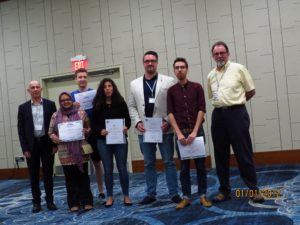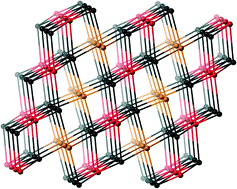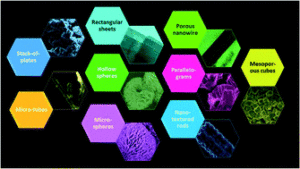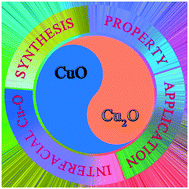This month saw the occasion of the 3rd International Symposium on Halogen Bonding, held in Greenville, South Carolina and chaired by Professor Bill Pennington (Clemson University). The event was a huge success, attracting over 90 participants from 21 countries, who came to discuss the latest developments in this exciting field of crystal engineering. Covering topics ranging from fundamentals like the refinement of the σ- and π-hole model to applications in fields such as pharmaceuticals, catalysis, and functional materials, the discussions were broad and vibrant – in part due to a strong showing of early career researchers. Three such promising academics presented in a special Rising Stars session, which CrystEngComm was pleased to support.
Presenting in this session was (pictured, left-to-right) Rafael Nunes of the University of Lisbon, Professor Davita L. Watkins of the University of Mississippi, and Dr Filip Topic of McGill University, they each received discounted registration and a personal invitation to submit to CrystEngComm.
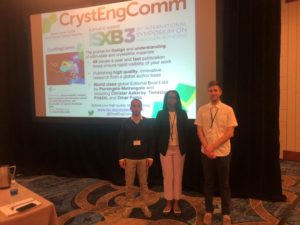 |
Immediately prior to the symposium was a satellite workshop on the IUPAC project to characterize chalcogen, pnictogen, and tetrel bonds – analogous interactions in which Group 14-16 element act as the electrophilic sites. Organized and Chaired by Professor Giuseppe Resnati (Politecnico Milano), the workshop featured a lively poster session and the RSC provided awards for two of the researchers presenting their work. The CrystEngComm prize went to Patrick Wonner of Ruhr-University-Bochum for his poster entitled “Carbon-halogen Bond Activation by Selenium-Based Chalcogen Bonding“, while the NJC prize went to Asia Marie Riel of Université de Rennes for her poster entitled “Isolated and Expanded Chalcogen Bond Halide Networks” (both pictured below).
CrystEngComm offers a huge congratulations to all Rising Stars and poster prize winners!


